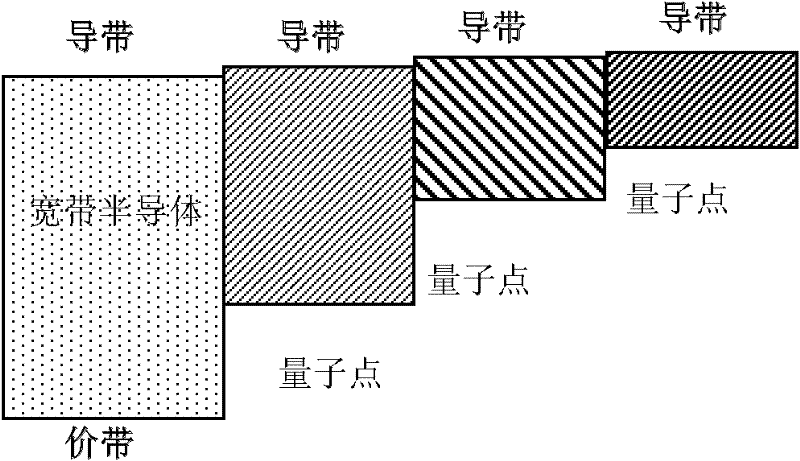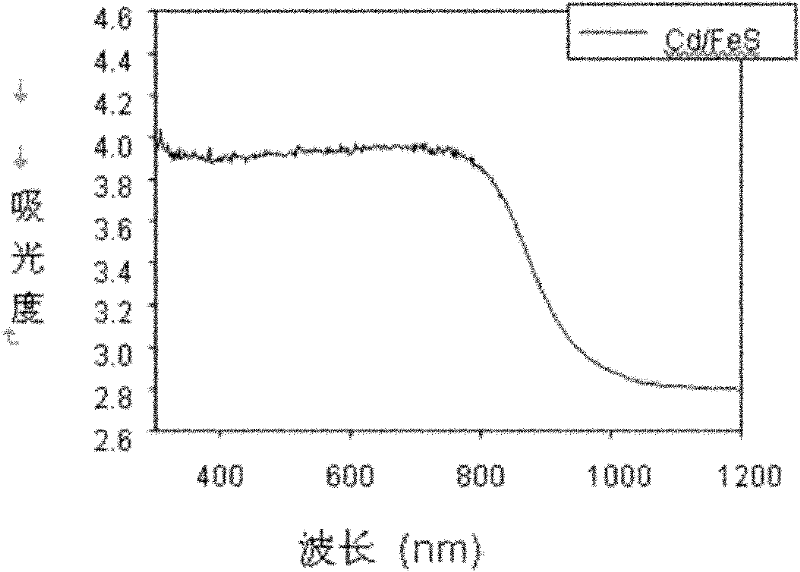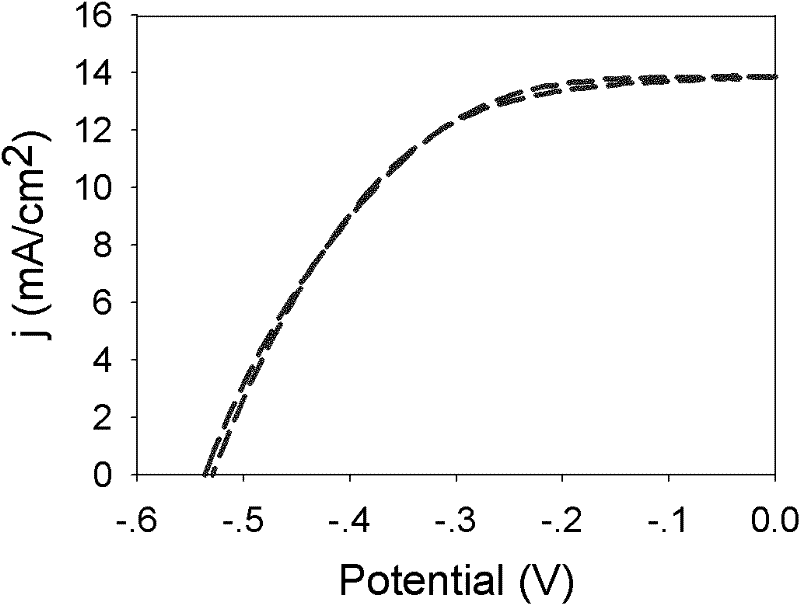Broad spectrum-absorption quantum dot-sensitized broad-band semiconductor optical anode
A quantum dot sensitization and semiconductor technology, which is applied in semiconductor devices, photosensitive equipment, electrical components, etc., can solve the problems of low photoelectric conversion efficiency, narrow light absorption range, and low light absorption efficiency of quantum dot sensitized solar cells, achieving High photoelectric conversion efficiency, uniform distribution and high coverage
- Summary
- Abstract
- Description
- Claims
- Application Information
AI Technical Summary
Problems solved by technology
Method used
Image
Examples
Embodiment 1
[0027] The nano-titanium dioxide slurry (nano-TiO 2 The average particle size is 15nm, and the porosity is 65%) is coated on the fluorine-doped tin oxide transparent conductive glass substrate by scraping, and heat-treated at 450 ° C for 30 minutes to obtain porous nano-TiO 2 Photoanode. Then follow the steps below to sensitize nano-TiO with CdS quantum dots 2 Photoanode:
[0028] (1) first porous nano-TiO 2 The photoanode in the concentration of 30mmol / L Cd 2+ Immerse in ionic water solution for 30 seconds;
[0029] (2) Wash the porous nano-TiO with distilled water 2 Photoanode, remove excess metal cations on the surface, and blow dry;
[0030](3) Nano-TiO adsorbed metal cations 2 Photoanode in the concentration of 30mmol / L S 2- Immerse in ionic water solution for 30 seconds;
[0031] (4) Wash the porous broadband semiconductor membrane electrode with distilled water, remove excess anions on the surface, and blow dry;
[0032] (5) repeat steps (1) to (4) 4 times, ca...
Embodiment 2
[0041] The difference from Example 1 is to adopt Cd respectively 2+ Ions, Fe 2+ , S 2- CdS and FeS quantum dots were deposited from ethanol solution of ions, and the conduction band position of CdS quantum dots was higher than that of nano-TiO 2 High, the forbidden band width is about 2.4eV, the conduction band position of FeS quantum dots is slightly higher than that of CdS quantum dots, and the forbidden band width is about 1.2eV, the prepared CdS / FeS quantum dots sensitized nano-TiO 2 The photoanode can absorb sunlight in the range of 350nm-1000nm, and the photoelectric conversion efficiency of the solar cell is about 3.6%.
Embodiment 3
[0043] The difference from Example 1 is that Cd 2+ Ions, Fe 2+ , S 2- The concentration of ions is 5mmol / L, repeat steps (1) to (4) 20 times when depositing CdS quantum dots, repeat steps (1) to (4) 15 times when depositing FeS quantum dots, the deposited CdS quantum dots The conduction band position is higher than that of nano-TiO 2 High, the forbidden band width is about 2.4eV, the conduction band position of FeS quantum dots is slightly higher than that of CdS quantum dots, and the forbidden band width is about 1.1eV, the prepared CdS / FeS quantum dots sensitized nano-TiO 2 The photoanode can absorb sunlight in the range of 350nm-1100nm, and the photoelectric conversion efficiency of the solar cell is about 3.0%.
PUM
| Property | Measurement | Unit |
|---|---|---|
| thickness | aaaaa | aaaaa |
| particle size | aaaaa | aaaaa |
| voidage | aaaaa | aaaaa |
Abstract
Description
Claims
Application Information
 Login to View More
Login to View More - R&D
- Intellectual Property
- Life Sciences
- Materials
- Tech Scout
- Unparalleled Data Quality
- Higher Quality Content
- 60% Fewer Hallucinations
Browse by: Latest US Patents, China's latest patents, Technical Efficacy Thesaurus, Application Domain, Technology Topic, Popular Technical Reports.
© 2025 PatSnap. All rights reserved.Legal|Privacy policy|Modern Slavery Act Transparency Statement|Sitemap|About US| Contact US: help@patsnap.com



